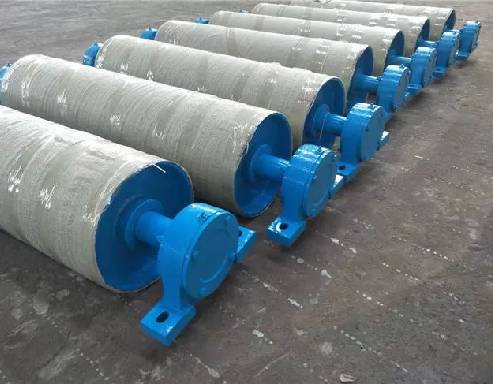 Afrikaans
Afrikaans  Albanian
Albanian  Amharic
Amharic  Arabic
Arabic  Armenian
Armenian  Azerbaijani
Azerbaijani  Basque
Basque  Belarusian
Belarusian  Bengali
Bengali  Bosnian
Bosnian  Bulgarian
Bulgarian  Catalan
Catalan  Cebuano
Cebuano  Corsican
Corsican  Croatian
Croatian  Czech
Czech  Danish
Danish  Dutch
Dutch  English
English  Esperanto
Esperanto  Estonian
Estonian  Finnish
Finnish  French
French  Frisian
Frisian  Galician
Galician  Georgian
Georgian  German
German  Greek
Greek  Gujarati
Gujarati  Haitian Creole
Haitian Creole  hausa
hausa  hawaiian
hawaiian  Hebrew
Hebrew  Hindi
Hindi  Miao
Miao  Hungarian
Hungarian  Icelandic
Icelandic  igbo
igbo  Indonesian
Indonesian  irish
irish  Italian
Italian  Japanese
Japanese  Javanese
Javanese  Kannada
Kannada  kazakh
kazakh  Khmer
Khmer  Rwandese
Rwandese  Korean
Korean  Kurdish
Kurdish  Kyrgyz
Kyrgyz  Lao
Lao  Latin
Latin  Latvian
Latvian  Lithuanian
Lithuanian  Luxembourgish
Luxembourgish  Macedonian
Macedonian  Malgashi
Malgashi  Malay
Malay  Malayalam
Malayalam  Maltese
Maltese  Maori
Maori  Marathi
Marathi  Mongolian
Mongolian  Myanmar
Myanmar  Nepali
Nepali  Norwegian
Norwegian  Norwegian
Norwegian  Occitan
Occitan  Pashto
Pashto  Persian
Persian  Polish
Polish  Portuguese
Portuguese  Punjabi
Punjabi  Romanian
Romanian  Russian
Russian  Samoan
Samoan  Scottish Gaelic
Scottish Gaelic  Serbian
Serbian  Sesotho
Sesotho  Shona
Shona  Sindhi
Sindhi  Sinhala
Sinhala  Slovak
Slovak  Slovenian
Slovenian  Somali
Somali  Spanish
Spanish  Sundanese
Sundanese  Swahili
Swahili  Swedish
Swedish  Tagalog
Tagalog  Tajik
Tajik  Tamil
Tamil  Tatar
Tatar  Telugu
Telugu  Thai
Thai  Turkish
Turkish  Turkmen
Turkmen  Ukrainian
Ukrainian  Urdu
Urdu  Uighur
Uighur  Uzbek
Uzbek  Vietnamese
Vietnamese  Welsh
Welsh  Bantu
Bantu  Yiddish
Yiddish  Yoruba
Yoruba  Zulu
Zulu High-Quality Pulley Lagging Rubber for Enhanced Performance
The Importance of Pulley Lagging Rubber in Material Handling Systems
In the dynamic world of material handling, efficiency and reliability are paramount
. One often overlooked component that plays a crucial role in maintaining these qualities is pulley lagging rubber. This specialized rubber material enhances the performance of pulleys in various conveyor systems, ensuring smooth operation and prolonging equipment life.Pulley lagging refers to the application of rubber to the surface of a pulley drum. This process is essential for enhancing the traction between the belt and the pulley. A well-lagged pulley minimizes slippage, which can lead to premature wear of both the belt and the pulley itself. This is particularly important in environments where heavy loads are transported, as any slippage can result in material spillage, downtime, and increased operational costs.
There are several types of rubber lagging available, each designed to meet specific operational needs. For instance, textured rubber lagging provides superior grip, making it ideal for high-tension applications where slippage is a concern. Meanwhile, smooth rubber lagging may be more appropriate for lighter loads or in applications where minimal belt wear is desired. Additionally, some options feature ceramic inlays that enhance grip even further, especially in challenging conditions involving moisture or debris.
pulley lagging rubber

The benefits of pulley lagging rubber extend beyond just enhanced traction. By providing a cushioning effect, rubber lagging can absorb shocks, reducing stress on the pulley and prolonging its lifespan. This resilience also protects the conveyor belt, reducing the frequency of maintenance and replacements. Consequently, businesses can achieve significant cost savings over time by investing in quality lagging materials.
Moreover, the installation of rubber lagging can improve the overall efficiency of a conveyor system. Enhanced belt tracking, minimized slippage, and reduced wear contribute to smoother operations and increased throughput. For companies operating in competitive industries, these factors can make a substantial difference in productivity and profitability.
In conclusion, pulley lagging rubber is a vital component of conveyor systems, significantly affecting their efficiency and longevity. By providing enhanced traction, shock absorption, and reduced wear, quality rubber lagging can lead to improved operational performance and considerable cost savings. As industries continue to evolve, investing in reliable pulley lagging solutions will remain essential for maintaining productivity and ensuring the seamless movement of materials. Therefore, organizations should prioritize the selection of appropriate lagging materials tailored to their specific operational requirements, ensuring a robust and efficient material handling system.
-
Revolutionizing Conveyor Reliability with Advanced Rubber Lagging PulleysNewsJul.22,2025
-
Powering Precision and Durability with Expert Manufacturers of Conveyor ComponentsNewsJul.22,2025
-
Optimizing Conveyor Systems with Advanced Conveyor AccessoriesNewsJul.22,2025
-
Maximize Conveyor Efficiency with Quality Conveyor Idler PulleysNewsJul.22,2025
-
Future-Proof Your Conveyor System with High-Performance Polyurethane RollerNewsJul.22,2025
-
Driving Efficiency Forward with Quality Idlers and RollersNewsJul.22,2025





























